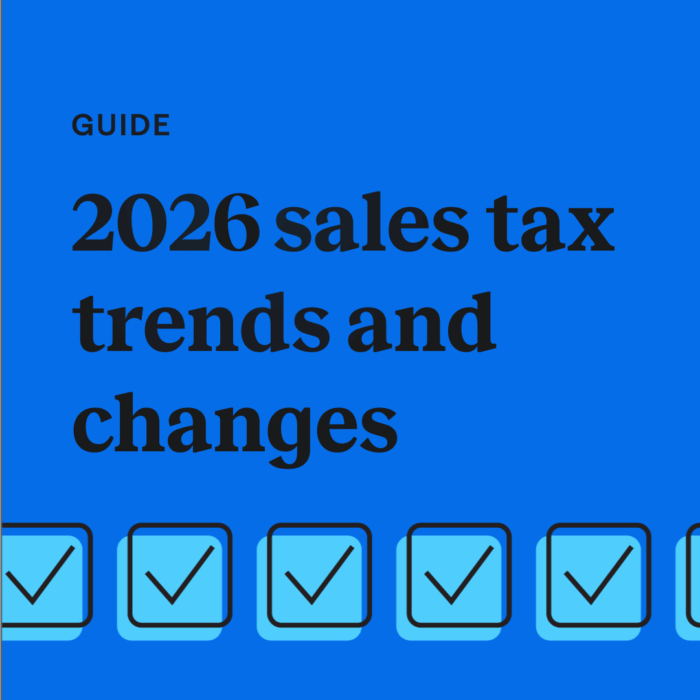How to measure and grow your e-commerce profits
by February 12, 2025
There are countless things that you’re likely tracking in a day—but, ironically, profit margins may be one of the first things that starts to slip.
For example, some sellers may be too focused on top-line growth that they fail to notice when they’re losing more money with each sale. Others may get so comfortable with the normal routine of things that they miss out on new opportunities for growth.
So, how can you avoid this happening to you? This blog will cover the top metrics to look out for, as well as strategies for increasing your profits online.
Four e-commerce metrics you should be tracking
The first step is to establish healthy habits when it comes to financial and performance tracking around your business. Beyond monitoring these nine core financial metrics, you’ll want to keep a pulse on your:
Return rate
This is something we all wish we could ignore, but the truth of the matter is that 41% of online buyers purchase variations of items with the intent of returning at least one of those purchases.
If left untracked, returns can silently kill your profit margins or distort your conversion rates, especially when you factor in costs associated with return shipping, restocking or inventory losses.
Know how return rates vary by SKU, as well as by customer type. A customer who makes frequent returns isn’t necessarily a bad customer—in fact, some of your most profitable customers might be the ones who buy and return a lot.
Customer behaviors may also change depending on what channel(s) or categories you sell in. Amazon buyers, for instance, may be accustomed to making frequent returns (especially on pricier products) because of Amazon Prime’s flexible return policy.
Pro tip: According to many sellers, a generous return policy can be more effective than a restrictive one. Not only does the promise of free, easy returns attract more sales, but a longer return window can reduce the chances of buyers rushing to make a return.
Opportunity cost
This represents the amount of money you would have earned if you hadn’t run out of stock on any given item. It’s a critical measurement for knowing what, how and when to restock your inventory.
The formula for this is, average units sold per day * average profit margin * days out of stock = opportunity cost.
Note that you’ll want to calculate opportunity cost using your profit margin, not revenue, to understand a product’s real financial impact to your business.
In practice, knowing your opportunity cost should make it easy to identify weaknesses in your operations (Do you need to reevaluate your pricing structure? Should you look for new suppliers? Do you need a more efficient supply chain overall?) and/or to decide when to stop selling a product entirely.
Sales Price Above Minimum (SPAM)
SPAM helps you to monitor your pricing strategies. It reveals how much revenue you’re capturing above the minimum profit threshold when competing on a marketplace like Amazon.
Zentail coined this metric as a way to further analyze profitability. For example, rather than simply monitoring your buy box win rates, you can see how often you’re winning the buy box at a low, medium or high profit.
There are two ways to measure this.
Sold-at price – minimum price = SPAM or (AOV – minimum price) * order volume = SPAM
The latter helps you calculate SPAM for a large group of orders. If you’re using a repricer, SPAM is especially helpful in understanding whether your repricer is actually earning you money as it wins the buy box, or eroding your margins in the process. Going one step further, this can help you determine whether the product you’re selling is too competitive and requires an overall in your pricing or listing strategies.
Sales tax
As we all know by now, the laws here are complicated. There are over 14,000 tax jurisdictions in the U.S., and different rules per state spanning both physical and economic nexus.
Determining where you have nexus and how much to charge can be a challenge of their own, and yet you can’t afford to ignore your tax obligations when conducting business or figuring out how much cash is left in your pocket at the end of the day.
The most efficient—and accurate—way to go about this is tapping a service like TaxJar that can calculate your sales rate, identify the right tax codes and submit returns for you. TaxJar can keep your business compliant as you scale up business, and as you sell on various channels like your website, Amazon and eBay.
Remember that the excuse “I didn’t know” won’t cut it, so you’ll want to establish a reliable system for managing sales tax.
Four strategies for growing your profits
Once you know how to evaluate the effectiveness of your pricing, inventory and other strategies, you can start to responsibly test new tactics for growth. Here are some ways you can keep revenue and profit margins up in the long term.
1. Reduce your reliance on Amazon
One of the most proven ways to grow your top line is by selling on marketplaces, which has resulted in some type of webstore growth for a whopping 92% of sellers after one year. But one common mistake that sellers make is hedging all of their bets on Amazon.
As the number one e-commerce channel in the world (and now the top search engine for product searches, ahead of Google), Amazon is a great channel to start with—but not one you want to end with.
You want to diversify your sales channels. While less developed than Amazon, channels like Walmart Marketplace and Google Shopping offer additional brand visibility, niche audiences and less-competitive spaces for you to leverage.
2. Automate time-consuming and error-prone tasks
There has probably been at least one person in your life who has advised, “Invest in software early.” Put simply, software is essential for turning your thousand-dollar business into a million-dollar company.
Beyond providing the intelligence and visibility you need to stay on top of your growing business, the right software can reliably automate tasks that are slowing you down or are prone to human error.
A tax-automation system like TaxJar, for instance, saves you the trouble of researching state rules, calculating taxes by hand or missing a deadline.
As another example, an e-commerce operations management platform, like Zentail, can enable you to list your products in bulk across multiple channels—using AI to format your product data to each channel’s tedious requirements and avoid listing errors or costly inventory issues.
If you’re not convinced, consider the time that you and your team waste working in your business versus on it. Translate that time into money and factor in any money spent on correcting errors, like oversold items. Then compare the price and benefits of software against your number to get your cost savings.
3. Offer your products as kits and bundles
Multipacks and bundles have an uncanny way of adding perceived value to your products. Though your customers may walk away spending more than they intended, they may simultaneously feel that they snagged a deal with their order of three shampoo bottles.
We like to call this the Costco Effect. And it works.
Aside from lifting your average order value (AOV), bundles can help you sell slow-moving inventory by pairing them with popular items. If you’re a retailer, you can also create unique listings for your products on competitive sites like Amazon. Rather than adding to an existing listing (and entering the tireless battle for the buy box), you can create a new ASIN just for your five-pack or bundle.
Just make sure you adhere to bundling rules and best practices, plus have the capability to track and split inventory accordingly.
4. Evolve your inventory planning approach
Poor inventory management is a $2 trillion problem today. This accounts for out-of-stock items (potential sales) and overstocked products that lead to higher carrying costs and wasted warehouse space.
For many online sellers, the problem often starts with an outdated forecasting system. They’ll default to a 30, 60 or 90-day forecasting model whereby they crunch numbers by hand and reorder enough inventory to last them the next 30 or so days.
They lack centralized, real-time data to reorder products on the fly when sudden environmental or social events change shopping behaviors. In the grand scheme of things, this approach also prevents sellers from having enough working capital to invest in newer, better products.
Today, PO automation and forecasting software exist to help sellers work more nimbly. The right solution will factor in data from your various apps, including lead times, holding costs and profit margins, to suggest the right reorder frequency and opportunity cost for each SKU.
This guest blog is from our friends at Zentail.








